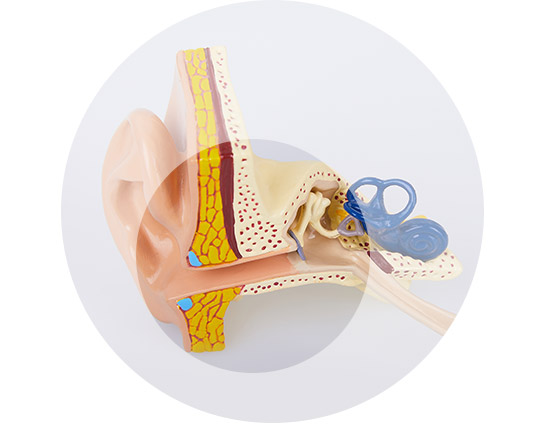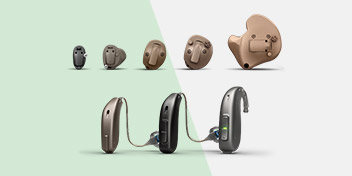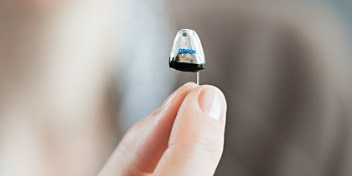Many of our hearing centres are open over Christmas. Check your local centre's opening hours and book your appointment here. Customer service & booking teams will be open on reduced hours.
Bilateral hearing loss

What is bilateral hearing loss?
Bilateral hearing loss simply means that both ears are affected.
Bilateral hearing loss usually occurs gradually over time. But in some (rare) cases, it can come on suddenly.
The experience of bilateral hearing loss can vary from person to person, so it’s important to have your hearing loss checked by a hearing care expert.
And given that there are other hearing health conditions whose symptoms might overlap with bilateral hearing loss, seeking advice from an expert means you’ll be treated for your specific hearing needs.


Book a free test for bilateral hearing loss
What causes bilateral hearing loss?
There are various causes of hearing loss, such as:
Symptoms of bilateral hearing loss
Hearing loss often occurs gradually over time, so it can be difficult to identify the symptoms. Even if you only notice the slightest signs of hearing loss, it is worth seeking professional advice. This way you’ll be able to receive proper diagnosis as early as possible and get any necessary treatment quickly.
Here are some common hearing loss symptoms to look out for:
- Difficulty understanding others, especially in noisy environments
- Turning up the TV volume louder than usual
- Asking others to repeat themselves
- Relying on lip-reading to understand what others are saying
Unilateral hearing loss is usually easier to spot since sounds will be louder in one ear than the other. Bilateral hearing loss can be identified when sound is generally more difficult to hear in both ears.

Treatment for bilateral hearing loss
Modern hearing aids are able to give a natural hearing experience to those with bilateral hearing loss. Today's hearing aids don’t just amplify sound. They send detailed sound signals to the brain, so that you can hear better with less effort.
The latest hearing aids can significantly improve speech understanding and increase the amount of sound delivered to the brain. This gives those with bilateral hearing loss a clearer sound environment and allows you to hear more detail in the sounds around you.
Types of bilateral hearing loss
Bilateral hearing loss can be classified into two types: sensorineural or conductive. So what’s the difference?
Bilateral sensorineural hearing loss
Sensorineural hearing loss means that the tiny hair cells in the inner ear or the auditory nerve (responsible for carrying sound to the brain) are damaged. It’s usually caused by the natural ageing process or exposure to loud sounds.
Sensorineural hearing loss

Bilateral conductive hearing loss
Conductive hearing loss occurs in the outer or middle part of the ear. This is where sound is converted to vibrations and sent to the inner ear. When there’s a blockage or other impediment in the outer or middle part of the ear, there may be problems transferring sound waves to the inner ear.
Excessive ear wax, a ruptured eardrum, or even ear infections can result in conductive hearing loss.
Conductive hearing loss

Sources
1. Santurette, S., Ng, E. H. N., Juul Jensen, J., & Man K. L., B. (2020). Oticon More clinical evidence. Oticon Whitepaper.
2. EEG testing with MoreSound Intelligence in on vs off setting, from Santurette et al.
3. https://www.oticon.com/solutions/more-hearing-aids
4. https://wdh02.azureedge.net/-/media/oticon-us/main/download-center---myoticon---product-literature/whitepapers/15500-0635---oticon-more-clinical-evidence-whitepaper.pdf?rev=C108&la=en
5. https://www.thelancet.com/journals/lanam/article/PIIS2667-193X(23)00244-2/fulltext
6. https://www.tandfonline.com/doi/full/10.1080/14992027.2022.2119611
7. https://journals.lww.com/ear-hearing/abstract/2022/05000/a_predictive_model_of_bilateral_sensorineural.33.aspx












